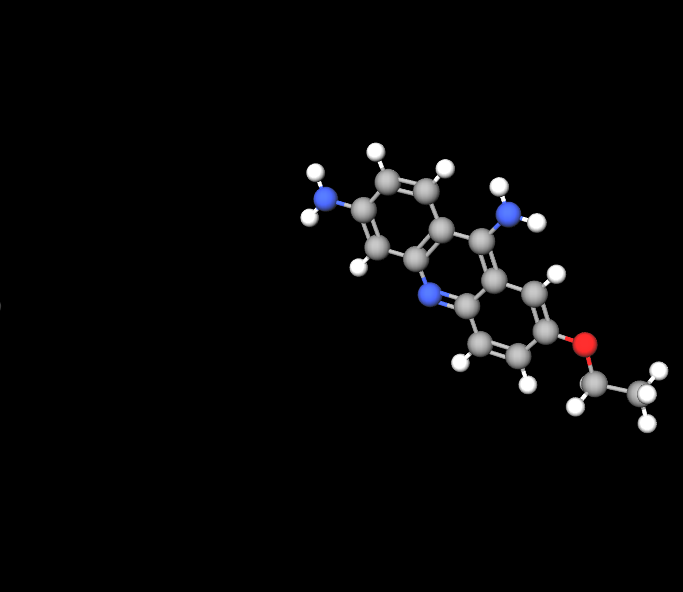Ethacridine Lactate Injection
- Introduction to Ethacridine Lactate
- Composition of Ethacridine Lactate Injection
- Mechanism of Action: How Ethacridine Lactate Works
- Indications and Uses of Ethacridine Lactate
- Off-Label Uses of Ethacridine Lactate
- Dosage and Administration
- Side Effects of Ethacridine Lactate
- Detailed Overview of Common Side Effects
- Interactions with Other Medications
- Contraindications and Cautions
- Special Considerations in Administration
- Overdose Information
- Storage and Handling Precautions
- Important Precautions
Introduction to Ethacridine Lactate
Overview and Historical Background:
Ethacridine Lactate, an antiseptic agent, has played a crucial role in the history of medicine since its introduction in the early 1900s. Initially created for use on the skin, this substance has evolved to be used in infection prevention measures worldwide.
Significance in Modern Medicine:
Ethacridine Lactate remains significant in healthcare due to its strong antimicrobial properties. Its crucial role in preventing infections after surgeries highlights its presence in both surgical rooms and medical clinics. It is mainly utilized as a disinfectant in solutions with a concentration of 0.1%. While it effectively combats Gram-positive bacteria like Streptococci and Staphylococci, it does not work well against Gram-negative bacteria such as Pseudomonas aeruginosa. Additionally, Ethacridine is utilized as a means for inducing second-trimester abortions.
Composition of Ethacridine Lactate Injection
Active Ingredients:
Ethacridine Lactate Injections' main component is ethacridine, an acridine derivative recognized for its antiseptic properties. This key ingredient provides ranging effectiveness against various types of microorganisms.

Excipients and Their Roles:
Various additional components work alongside the ingredient to stabilize and improve the active molecule delivery. These components consist of buffers for pH maintenance agents, for osmolarity balance and solvents to support the optimal dispersion of the main ingredient.
Mechanism of Action: How Ethacridine Lactate Works
Pharmacodynamics:
Ethacridine Lactate works by inserting itself between bacteria's DNA strands, stopping them from multiplying. This not only stops the growth of bacteria but also hinders the spread of current infections.

Biochemical Interactions and Effects:
The way Ethacridine Lactate interacts with DNA is quite selective, mainly focusing on microbial cells while having minimal effects on human cellular DNA. This helps reduce any effects on human cells.
Indications and Uses of Ethacridine Lactate
Approved Therapeutic Uses:
Overview of Clinical Efficacy:
Off-Label Uses of Ethacridine Lactate
Case Studies and Research Outcomes:
Ethacridine Lactate has been investigated for purposes beyond its usual uses, including treating specific eye conditions. This showcases its adaptability and potential for applications.
Ethical Considerations in Off-Label Prescribing:
When doctors decide to use Ethacridine Lactate for purposes, than its approved ones they need to carefully consider the advantages and ethical concerns making sure that patient well being and informed consent are top priorities.
Dosage and Administration
Dosage Guidelines Across Different Conditions:
The amount of Ethacridine Lactate needed depends on the infection type and its severity, following detailed recommendations for different conditions.
Methods of Administration:
Ethacridine Lactate is applied directly to the area, ensuring healthcare providers meticulously apply it to optimize its healing benefits.
Adjustments for Specific Populations:
It's important to make sure the dosage is right for groups like adults, kids and people, with kidney issues. This helps avoid effects and makes sure the treatment works well.
Side Effects of Ethacridine Lactate
Common Adverse Reactions:
Common side effects may involve irritation in the area, redness, and mild skin inflammation. These responses usually don't last long and improve either with ongoing usage or when you stop the treatment.
Rare and Serious Side Effects:
Severe reactions, like shock and serious skin reactions, while rare, can happen and need urgent medical attention.
Detailed Overview of Common Side Effects
Symptoms Management:
Treating symptoms often involves using medications to relieve inflammation and discomfort, including the application of corticosteroids.
When to Seek Medical Attention:
Patients who are facing long lasting side effects should promptly seek medical help to avoid any complications and ensure they receive the necessary care.
Interactions with Other Medications
Common Drug Interactions:
Ethacridine Lactate could have interactions, with other topical products, especially those that have heavy metals or other drying substances. Using it together with some antibiotics may also affect its ability to work as an antiseptic.
Impact on Pharmacokinetics:
The existence of Ethacridine Lactate could alter how quickly other medications taken at the time are absorbed. It's important to understand its impact, on how drugsre processed and removed from the body to prevent treatment inefficiencies or harmful effects.
Contraindications and Cautions
Absolute Contraindications:
Patients who are allergic to any components of Ethacridine Lactate should avoid using it. It is not recommended for use when the skin integrity is compromised beyond the surface layers.
Precautionary Measures:
It is important to be careful when administering this medication to individuals with burns or significant open wounds, as it can be absorbed into the body more easily, potentially causing harm.
Special Considerations in Administration
Administration to the Elderly:
Elderly individuals might show increased sensitivity to Ethacridine Lactate, requiring adjustments in dosage and careful monitoring of skin health and kidney function.
Administration to Pregnant Women and Nursing Mothers:
The safety of Ethacridine Lactate during pregnancy and breastfeeding has not been confirmed. It should only be used if the benefits outweigh the risks to the baby.
Pediatric Administration Guidelines:
Special attention should be given to using the effective dose and limiting the application area in pediatric patients to minimize potential systemic effects.
Overdose Information
Symptoms of Overdose:
Symptoms of an overdose could lead to heightened overall side effects like severe skin irritation damage to mucous membranes and potential toxicity, throughout the body.
Immediate Actions and Antidote Availability:
If too much is used, rinse the area with water right away and stop using the product. Providing care is important and in serious situations medical help may be needed. There isn't a remedy, for this situation.
Storage and Handling Precautions
Optimal Storage Conditions:
Remember to keep it in a dry place and shielded from light to ensure it works effectively. Avoid freezing the liquid as it could change its chemical composition.
Safety Measures for Handling:
Handlers must make sure to wear the protective gear to prevent any accidental exposure. It's important to seal containers after every use to avoid any contamination.
ethacridine lactate how to use
Ethacridine has also been administered through an extra amniotic injection of 150 ml of a 0.1% solution to trigger abortion or delivery in individuals experiencing missed abortion or fetal demise particularly during the later stages of pregnancy either alone or, alongside oxytocin or dinoprost drip infusion.
Important Precautions
Monitoring Requirements:
Patient Counseling Information:
Patients need to be educated on the ways to apply medication, possible side effects and the significance of following prescribed doses.







